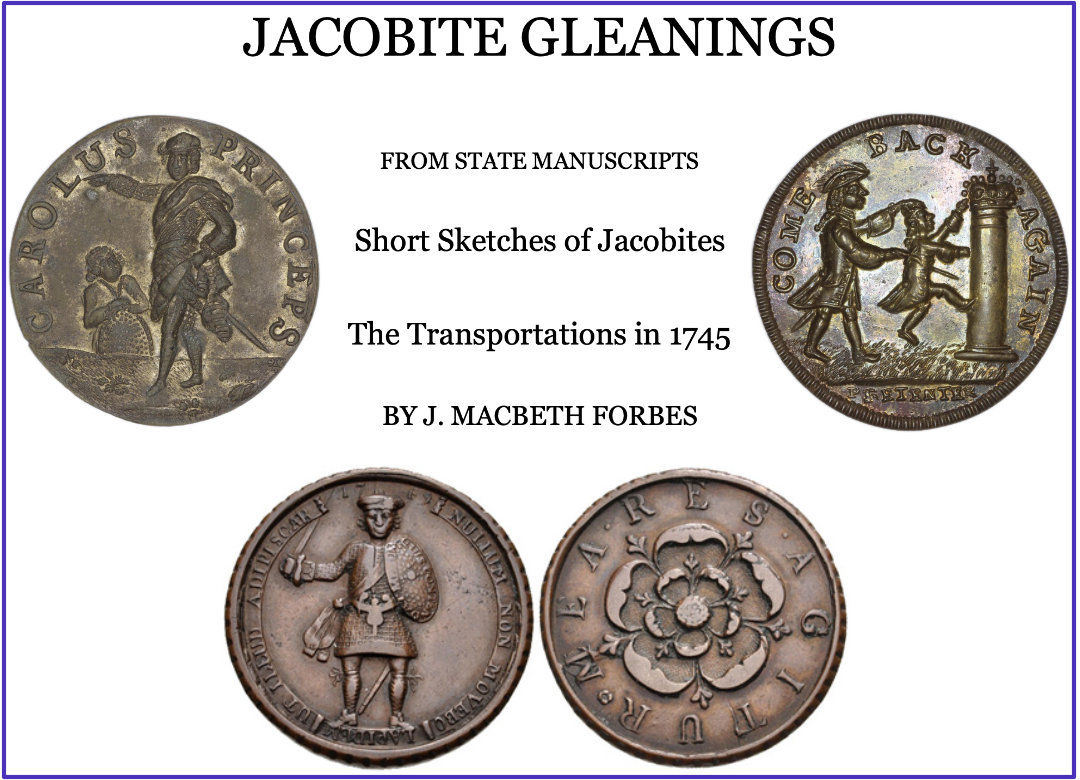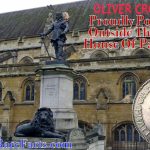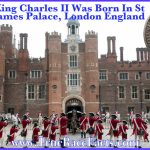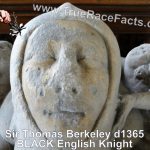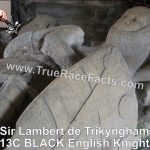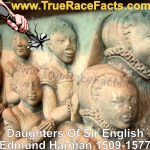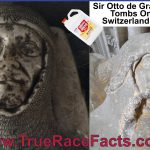1745 & Jacobite Genocide Of The Ancient Dark Anglo-Saxons, Irish, English & Scots Put Into Slavery Runaways
- Guinevere Jackson
- 31 December 2022
- 0 Comment
The final dark monarchy that tried to regain the British throne – Charles Edward Louis John Sylvester Maria Casimir Stuart (20 December 1720 – 30 January 1788) was the elder son of James Francis Edward Stuart, grandson of James II and VII, and the Stuart claimant to the thrones of England, Scotland and Ireland from 1766 as Charles III. During his lifetime, he was also known as “the Young Pretender” and “the Young Chevalier“; in popular memory, he is known as Bonnie Prince Charlie.
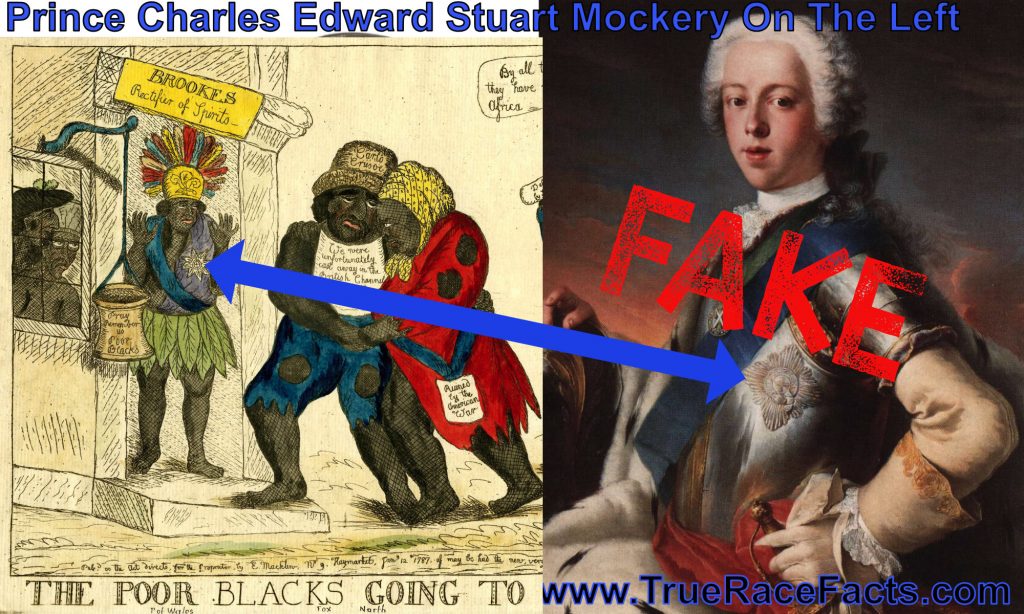
The Prince of Wales and his adherents are travestied as black men; the Prince stands in a doorway inscribed ‘Brookes Rectifier of Spirits’, which is represented as a debtor’s prison: the heads of George Hanger and Burke are seen through a barred window on the left outside which hangs a basket inscribed ‘Pray Remember us Poor Blacks’. Both are naked, except for Hanger’s accustomed cocked hat
The Glorious Revolution
The story begins in 1688. This was the year when James II – the Stuart king of England, Ireland and (as James VII) of Scotland – was deposed in what would become known as the ‘Glorious Revolution’. The backstory to this was complex, but much of it came down to religious tensions that had long troubled the country. James, who became monarch following the death of his brother Charles II, was a Catholic who was regarded with hostility by many Protestants (including his own nephew, the Duke of Monmouth, who attempted to overthrow James and was beheaded for his trouble).
Despite James’ pro-Catholic policies, many in England were reassured by the fact that the next in line to the throne was the king’s safely Protestant daughter, Mary. But everything changed in June 1688, when James’ second wife gave birth to a male heir, James Edward Stuart. Suddenly, Britain had a Catholic dynasty on its hands.
Protestant aristocrats hatched an audacious plan to remove James from power and replace him with his daughter Mary and her Dutch husband, William of Orange. A group of nobles, the ‘Immortal Seven’, sent a letter to William, literally inviting him to invade. Accompanied by forces much larger than the Spanish Armada of a century before, William did exactly that, landing in Devon in November of that year.
The Jacobite Rising of 1689
Knowing his situation was hopeless, James fled to France, where he was taken in by his ally Louis XIV. William and Mary were crowned as co-monarchs in 1689, but right from the start there were many of James’ supporters refused to take this lying down. They became known as the Jacobites, with the word deriving from Jacobus, the Latin for James. Different factors motivated the Jacobites – some were Catholics, of course, but there were also the Scottish Episcopalians who believed in the divine right of James to rule as king. Many Scottish Jacobites would also have felt an instinctive fidelity towards the House of Stuart, which had originated in Scotland.
The Jacobites first rose up in 1689, soon after William and Mary’s coronation. The primary instigator was a senior Scottish soldier, John Graham, Viscount Dundee. Fiercely loyal to the Stuarts, Dundee rallied a rebel army largely made up of Highlanders. They faced off against William’s troops at the Battle of Killiecrankie on 27 July 1689.
Despite being vastly outnumbered by the new king’s men, the Jacobites pulled off a famous victory. While hundreds of them were felled by musket fire, the Highlanders charged at the enemy with swords and axes, slaughtering William’s troops. However, Dundee himself was killed, dealing a massive blow to the rebellion. Further battles in 1689 and 1690 ended in defeats, effectively ending this era in Jacobite history.
‘The Fifteen’
James II, whose attempt to regain his crown had been crushed by William at the Battle of Boyne in Ireland in 1690, lived out his latter years in exile, dying in 1701. William, by that point a widower, died in 1702, and was succeeded by his sister-in-law Anne. When she herself died in 1714, the crown went to her closest living Protestant relative, George I of Hanover.
But the Jacobite cause was still going strong, with the union of the kingdoms of Scotland and England in 1707 angering many Scots and increasing support for the current Stuart claimant, James II’s son John Edward Stuart. The next major uprising came in 1715, when the Scottish Jacobite John Erskine, Earl of Mar, raised a rebellion involving thousands of Highlanders. After taking key locations in northern Scotland, the rebels headed south to clash with government forces in the Battle of Sheriffmuir on 13 November 1715.
This turned out to be inconclusive battle, with Mar proving an ineffectual commander. Despite other rebel actions in England, and the arrival in Scotland of James Edward Stuart himself in December, the momentum of the ‘Fifteen’ (as this rising would become known) had been lost. James Edward Stuart eventually returned to exile in France.
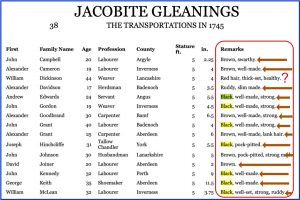
Jacobite Gleaning Ancient anglo-Saxons being led into slavery. Page 38: only one out of 15 maybe caucasian.
Bonnie Prince Charlie
The most famous and romanticised of all the Jacobite uprisings came decades later, in 1745. This was when James Edward Stuart’s son, Charles Edward Stuart, attempted to take the throne for his father. More familiar to us today as Bonnie Prince Charlie, he arrived on the island of Eriskay in the Outer Hebrides in July of that year, accompanied by a tiny contingent of followers, and about to forge his own legend.
By September, the charismatic ‘Young Pretender‘ had raised enough support among Highlanders to triumphantly march into Edinburgh. That same month, Stuart led Jacobite forces to victory against government troops at the Battle of Prestonpans in East Lothian. The Jacobite army eventually crossed into England, getting as far as Debry. But the lack of widespread support from the English, and the lack of assistance from France, forced Stuart to very reluctantly make his way back to Scotland.
The Young Pretender’s dream of restoring the throne came to an end at the Battle of Culloden, which took place on 16 April 1746. Here, Bonnie Prince Charlie’s army took on the ruthless Duke of Cumberland and his government troops, and it turned out to be a bloodbath for the Jacobites. After the hour-long battle, wounded Jacobites were killed in cold blood, and there was a brutal crackdown on communities across Scotland, with many executed for treason and houses burnt to the ground.
As for Charles Edward Stuart – he lived as a desperate fugitive in the dark months after Culloden, before finally escaping back to mainland Europe where he would live on for many more years.
His father, the ‘Old Pretender’ James Edward Stuart, died in 1766. Charles passed away in 1788. After the Jacobite cause ceased to be a serious political threat, it became increasingly mythologised, especially by Victorian writers. Bonnie Prince Charlie is still popularly regarded as the tragic hero of a deposed dynasty, whose rebel rising of 1745/6 has become a part of Scottish folklore. [1]
See the Jacobite Gleaning that includes some to the British Jacobite prisoners. You will NOTICE that most of the prisoners were indeed so-called BLACK people.
“So they shall make their own tongue to fall upon themselves: all that see them shall flee away.”
Psalms 64:8 KJV
Article Citation: [1] https://www.history.co.uk/articles/a-brief-history-of-the-jacobite-risings Creative Commons Attribution-NonCommercial-ShareAlike 4.0 International (CC BY-NC-SA 4.0)
Disclaimer: True Race Facts have made the long overdue honest determination that the King was dark brown, aka BLACK of the Hebrew, Shemitic negro race. Based on his facial phenotype, lips and thick braided hairstyle. Authentic original coins are the most accurate determination to identify the King because he would have approved the coins before they were hammered and issued. There are many ancient FAKE coins on the market, so beware when looking at coins. The deceivers made it their mission to cover up the dark ages, so even history should now be considered pseudo-history.


